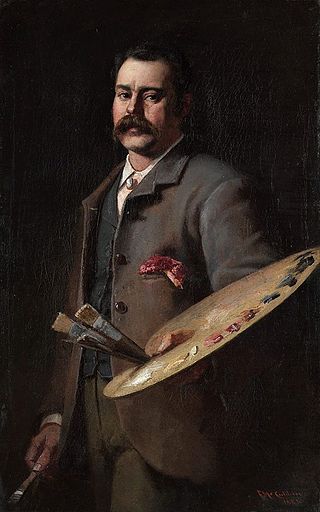
Frederick McCubbin was an Australian artist, art teacher and prominent member of the Heidelberg School art movement, also known as Australian impressionism.
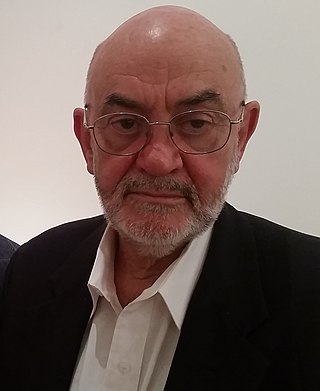
Rick Amor is an Australian artist and figurative painter. He was an Official War Artist for Australia.
Nicholas Harding was a British-born Australian artist, known for his paintings, in particular portraits.
Louise Hearman is an Australian artist from Melbourne who has been painting and drawing from a very young age. She mostly paints with oil on masonite, though she does work with pastel and charcoal from time to time.

Walter Herbert Withers was an English-born Australian landscape artist and a member of the Heidelberg School of Australian impressionists.
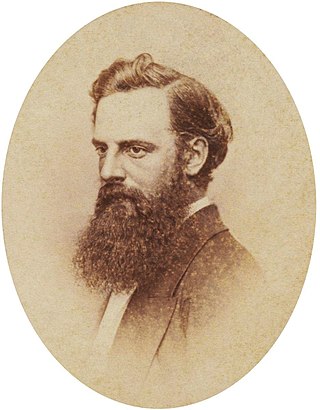
Nicholas Chevalier was a Russian-born artist who worked in Australia and New Zealand.
Mike Parr is an Australian performance artist and printmaker and Painter. Parr's works have been exhibited in Australia and internationally, including in Brazil, Cuba, France, Germany, Hungary, Japan, Korea, Taiwan, and the United States.
Cressida Rosemary Campbell is an Australian artist.
Bob Jenyns is a prolific Australian artist whose practice, spanning over four decades, has produced countless sculptures, prints, drawings, and paintings. He has participated in many of Australia's most significant art exhibitions including the first Biennale of Sydney (1973), the 1973, 1975 and 1978 Mildura Sculpture Triennials, the 1981 Australian Perspecta, the 2nd Australian Sculpture Biennale, and the 1990 Sculpture Triennial. Jenyns was a finalist in the 2006 Helen Lempriere National Sculpture Award, and in 2007 won the award with his work Pont de l'archeveche. He is represented in many of the country's largest collections, including the National Gallery of Australia, the Art Gallery of New South Wales, the Queensland Art Gallery, the Museum of Contemporary Art in Brisbane, and the Tasmanian Museum and Art Gallery. Jenyns has also received multiple grants from the Australia Council's Visual Arts Board, has curated exhibitions and has taught at the Tasmanian School of Art as head of the sculpture department (1982–2005).
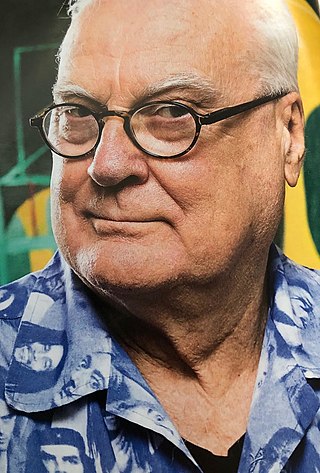
Gareth Sansom is an Australian artist, painter, printmaker and collagist and winner of the 2008 John McCaughey Memorial Prize of $100,000.

Ludwig Hirschfeld Mack was a German-born Australian artist.

Violet Helen Evangeline Teague was an Australian artist, noted for her painting and printmaking.
Eric Prentice Anchor Thake was an Australian artist, designer, painter, printmaker and war artist.
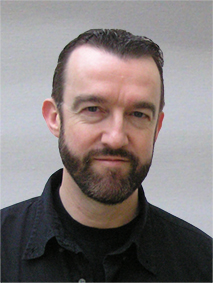
Nigel Cox is an Irish figurative artist.
Jeffrey Thomas Makin is an Australian artist, art critic, and director of Port Jackson Press Australia. He is best known for his paintings en plein air of the Australian landscape.
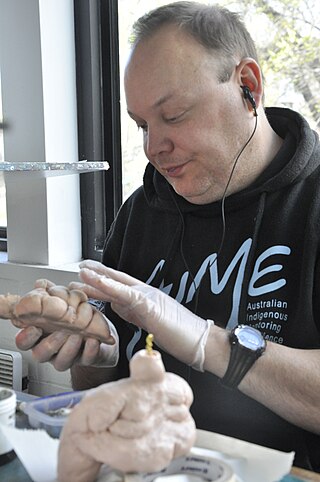
Chris Mason is an Australian artist. Mason resides in Melbourne. His work is held in several public collections, including those of the National Gallery of Australia and the State Library of Victoria.
Mary McCartney Macqueen was an Australian artist who was known for her drawing, printmaking and mixed media works on paper. Her artistic style was expressive, gestural and experimental.
Stephen Wickham is an Australian photographer, painter and printmaker.
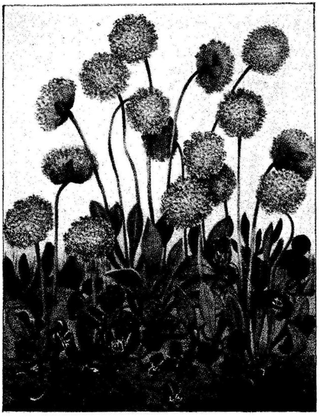
Malcolm Ian Howie (1900–1936) was an Australian self-taught commercial and botanical watercolour artist and Methodist local preacher.
David Hansen was an Australian art historian. Hansen made notable contributions to the understanding of Australian art history, and curatorship, specialising in early colonial Australian imagery and artwork from the British Regency period.










